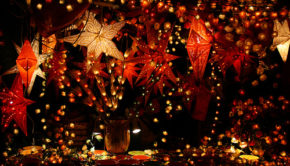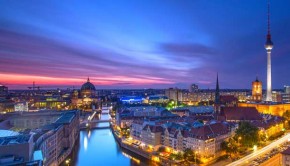Art Lovers unmissable: Berlin Museum Island
Berlin. Perhaps we devote little attention to this beautiful city and its Country in our posts, even if there is someone who can offer great insights about Germany all in all. Nonetheless, this remains a great city, which certainly deserves to be included among the must visit destinations in Europe. There are lots of interesting places to visit in Berlin, but the city is most of all a one stop place for lovers museums. If this is your perspective, then the first tourist attraction you should visit once there is the Museum Island.
Located between the Spree River and the Kupfergraben, and accessible from any part of the city, this ‘island’ is, as the name suggests, filled with museums; it has been listed as a UNESCO World Heritage site, not just because of its world-famous collections, but because it is a unique architectural assembly of museum buildings. The five museums on the Museumsinsel are the realization of a visionary project dating back to the XIX century: creating “a sanctuary of art and science“.
The first museum built on Museum Island, in 1830, was the Altes Museum. Formerly a Royal Museum commissioned by King Friedrich Wilhelm III to allow the general public to view the treasures of the royal family, the building resembles a Greek Corinthian Temple, and nowadays is home to collections of antiquities from the Roman and Greek era.
The not-to-be-missed: the Berlin Goddess, the Praying Boy and the bust of Caesar.
Next to the Altes Museum stands the Old National Gallery, completed in 1876. This is the museum of contemporary art, hosting art collections and paintings by great artists of the likes of Monet, Renoir, and Carl Spitzweg.
The not-to-be-missed: the rooms with the Impressionists and Caspar David Friedrich’s Monk by the Sea.
The Bode Museum (1904,) with its striking cupola, is one of the most beautiful buildings in Berlin. It is the home to Berlin’s largest sculpture collection, including works from all over Europe dating from the early Middle Ages to Classicism, as well as Byzantine art of the 3rd to 19th Centuries. On Sunday evenings, during the summer, free concerts are held outside the Bode Museum.
The not-to-be-missed: the Four Evangelists by Riemenschneider.
The Pergamon Museum, completed in 1930, hosts an amazing collection of Egyptian, Hellenistic and Byzantine antiquities. Actually, this is 3 museums in one, which thing makes it even more special. In fact it includes the Antiquity Collection, the Museum of the Near Middle East, and the Museum of Islamic Art.
The not-to-be-missed: the market gate of Miletus, the Aleppo Room, and of course, the Pergamon Altar.
The Neues Museum or New Museum dates back to 1859. After being heavily damaged during the bombing of Berlin during World War II, the museum has been rebuilt by architect David Chipperfield and reopened in 2009. It houses a collection of prehistoric, early history and Egyptian works of Art. It is connected to the Altes Museum via a walkway. The stairway hall of the New Museum sometimes host concerts and theatre productions.
The not-to-be-missed: the bust of Queen Nefertiti and the Berlin Gold Hat
There are also a number of other important buildings on the Museum Island. Among these: the Dom, Berlin’s protestant Cathedral; the Stadtschloss, an enormous 19th century palace; the Marstall, the royal stables, now used as a library and archive. To see everything, you can get the Museum Island Welcome Card at the main tourist information offices, which entitles you to use all public transport and visit all the permanent collections, but it’s not valid for special exhibitions.
Photo by Paul Mannix











